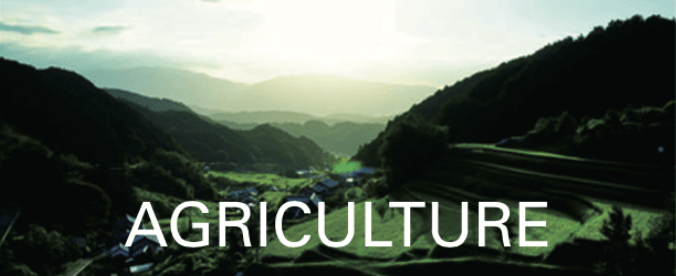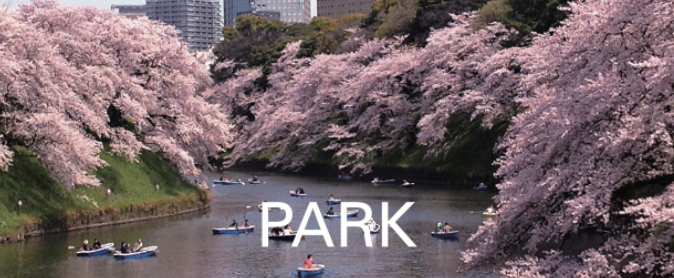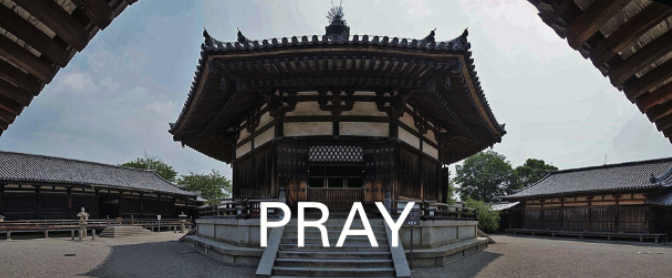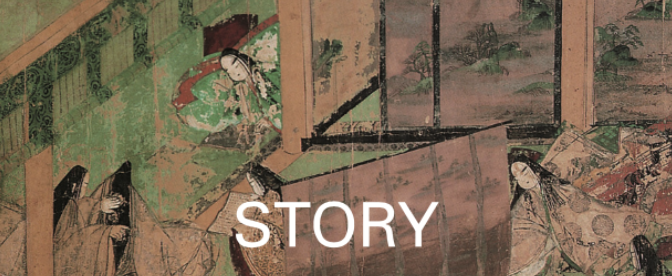
Ano no Sato Village is located in a valley along the Niugawa River, which pours into the Yoshinogawa River. Emperor Go-Daigo (1288 – 1339), successfully overthrew the Kamakura shogunate and brought the Imperial House back into power (1333 – 1336). Later, the Ashikaga shogunate split the imperial family into two opposing factions between the Ashikaga backed Northern Court, situated in Kyoto, and the Southern Court, based in Yoshino Nara, led by Go-Daigo and his later successors.
Emperor Daigo stopped here when escaping to Mt. Yoshino in 1336, after being pushed from Kyoto, by Ashikaga Takauji (1305 – 1358), the founder of the Ashikaga Shogunate. Emperor Go-Murakami (1328 – 1368) established the Imperial Palace of the Southern Court at the private residence here, in 1348, after leaving Mt. Yoshino.
The private residence of the Imperial Palace is left as a historic site, and this museum displays treasures of the Southern Court, items related to Emperor Go-Daigo, and valuable historical materials such as, Ekirei, certificates of qualification to use official horses by the imperial court, and Tenmokudai, a stand for tea bowls.
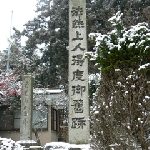
The principal image of this temple is Yakushi Nyorai, the Buddha of Healing. It is enshrined at Konpon Chu-do, the largest central hall, which was made by Saicho, Dengyou Daishi (767 – 822), the founder of the Buddhist Tendai sect.
Fumetsu no hoto, the eternal dharma flame, still lights the principal image at the Konpon Chu-do. Here, the rape seed oil has been poured for 1,200 years and has been preserved. There is Honen-do, the temple dedicated Honen Shonin (1133 – 1212), a priest and the founder of the Jodo sect – the first independent sect of Japanese Pure Land Buddhism.
It is about a 5 minute-walk from the Enryakuji Kaian, lodging, by going down a steep slope, after going up and down to Monju-ro, Manjusri Pavilion, a training hall of Zen meditation, from the Konpon Chu-do. Honen-do is on the site of Kotokuin Temple, where Honen had Tokudo, entering Buddhist priesthood, under Koen Ajari (died 1169), a monk of the Tendai sect.
Later, Honen became the founder of Kamakura New Buddhism, new schools of Japanese Buddhism founded during the Kamakura period. The site of Kotokuin Temple is the memorial site of Honen and Kamakura New Buddhism.
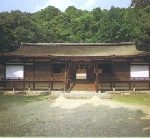
This shrine is listed as a World Heritage site and is located on the other side of Byodoin temple Uji Kyoto. This shrine enshrined Uji no wakiiratsu no mikoto, the prince of Emperor Ojin, Emperor Ojin, in the 3rd century, was regarded as the guardian of warriors, and Emperor Nintoku in the 4th century, was the prince of Emperor Ojin.
This shrine has the oldest main shrine building of the late Heian period in the 11th-12th centuries. The worship hall, which is said to have been dismantled and reconstructed from the Uji detached palace is Shinden-zukuri, a manor of Heian era palatial architecture. The hall conveys the aesthetics of the court culture and remnants of the nobles. There is a famous mineral spring, Kiriharamizu, at this site.
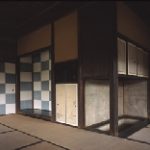
This is a villa of the Katsuranomiya family, built by Prince Hachijo Toshihito: the grandson of Emperor Ogimachi (1517 – 1593) and the founder of the Katsuranomiya family, during the Edo period. The garden and architecture at the time of construction remains.
There is a Japanese style garden with a path around a central pond, which draws water from the Katsura River, and where teahouses and artificial hills around a pond are laid out. Shoin, the drawing room, is based on the Shoin Zukuri, a style of Japanese residential architecture used in the samurai and temple guest halls, and taken in the Sukiya, a style of a tea-ceremony arbor.
Eventually, that style is Karomi, without persistence. After Prince Hachijo was adopted by Toyotomi Hideyoshi (1537 – 1598), the powerful feudal lord and Imperial Regent who unified Japan, Hideyoshi had his real child. Though Prince Hachijo returned to the Imperial family, he could not succeed to the throne. He became the founder of the Katsuranomiya family.
The Karomi style of the prince is like Bamboo with its flexibility and straightness.
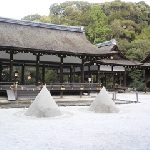
“Great shrine forests deeply connected folklore and traditional culture” -This shrine enshrines Kamo-wake-ikazuchi-no-kami, as the Kami-deity of water, agriculture, and sericulture. Most of this 690,000 sq. meter, sacred shrine complex has been designated as a Historical Landmark. The area contains many large trees, such as oaks and cherry trees.
On May 15, 1694, the Aoi Festival resumed at this shrine, after a 200-year break since the outbreak of the Onin War (1467 – 1477), the controversy over the successor of the Ashikaga Shogunate, between Hosakawa Katsumoto (1430 – 1473), Ashikaga Shogun’s deputy, and Yamana Sozen (1404 – 1453), the Shugo, Governor of Provinces, in the western part of Japan. The Imperial Court representative was sent to this shrine for this festival, in the time of typhoons and other disasters occurring in the Nara period (710 – 794), and every year in the Heian period (794 – 1185).
And the march of Imperial representatives has given the people of Kyoto an opportunity to come into contact with the elegance of the Imperial Court.
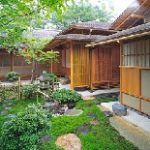
The Uji River traditional fishing method Ukai, fishing with cormorants, appears in Nihon-shoki, the oldest chronicles of Japan in the 8th century. Saicho, Dengyou Daishi (767 – 822), the founder of the Buddhist Tendai Sect, brought back tea by Kentoshisen, a ship of an envoy to the Tang Dynasty (618 – 907), in the 9th century. Emperor Saga (786 -842), who knew the benefits of tea, deeply devoted himself to Buddhism and avoided the slaughter of fishing.
Uji-byodoin Temple was built in the latter part of the 11th century. At that time, Mappo-shiso, the belief of Buddhism’s destined downfall had spread. Gradually, the fishermen of the Uji River transferred from fishing to making tea, – “the history of Pure Land Buddhism and Tea.”
You can easily enjoy a tea ceremony service at this tea house, which is located across from Uji-byodoin Temple.
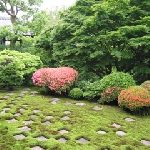
This temple was founded in the Kamakura period (1185 – 1333) by Kujo Michiie (1193 – 1252), a courtier and regent, who named To-Fuku ji from To-daiji Temple in Nara and Ko-Fuku ji in Nara, by taking one character of those temple names. This temple is the Zen temple is the fourth ranked of Kyoto Gozan, the five great Rinzai temples of Kyoto. This Hojo, abbot’s chamber, and garden of Zen Buddhism is unique.
The garden was designed by Shigemori Mirei (1896 – 1975), a modern landscape architect, who incorporated the abstract composition of modern art, based on the dignity of the simplicity and fortitude of the Kamakura period. Mirei studied Japanese painting and the history of Japanese gardens. His garden design is characterized by powerful rock arrangements and a modern allotment of moss.

The Tokugawa shogunate developed this temple’s cathedral. When the Imperial Palace was rebuilt during the Kanei period of the Edo period (1603 – 1868), Shishin-den, the hall for state ceremonies, and other buildings were relocated to this temple. In the national treasure Kondo, in the main hall of this temple, appears the court architecture of the early modern days.
This Reihokan, Sacred Treasure Hall, exhibits the cultural assets to show the history of faith in the imperial family, court nobles and samurai class for over 1100 years. The national treasure image of Kujyaku Myoo, the Peacock King statue with three faces and six arms (northern Song dynasty in the 11th Century), is refreshed and intelligent. The featured peacock feathers are realistic, and its iconicity is extraordinary.
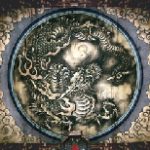
Emperor Hanazono (1297 – 1348) was enthroned at the age 12 and transferred the throne to Emperor Go-Daigo (1288 – 1339), who successfully overthrew the Kamakura shogunate and brought the Imperial House back into power (1333 – 1336), 10 years following Ryoto tetsuritsu, the alternative succession of the imperial throne. Emperor Hanazono had the residence of a court noble, as his Imperial villa. That villa was located in Hanazono Kyoto, where the seasonal flowers blossomed.
This temple began by transforming the villa and by inviting Kanzan Egen (1277 – 1360): a monk of Japanese Rinzai Zen Buddhism and the founder of Myoshinji Temple. Kanzan was recommended by Shuho Myocho (1283 – 1338): a Japanese Rinzai Zen Buddhist monk and the founder of Daitokuji Temple.
Lady Kasuga (1579 – 1643), who was the wet nurse of the 3rd Shogun, Tokugawa Iemitsu and one of the best politicians to negotiate with the Imperial Court for the Tokugawa Shogunate, made her family temple here. Kanou Tanyu (1602 – 1674), a painter patronized by the Togugawa Shogunate family, drew Unryu-zu, the painting of a Dragon in the clouds, on the ceiling of the lecture hall of this temple.
– Lady Kasuga enforced and realized that Tokugawa Masako (Toufukumon’in) (1607 – 1678), who was a daughter of Tokugawa Hidetada, the 2nd Shogun, became Chugu, (second consort of the emperor) of Emperor Go-Mizuno (1596 – 1680).
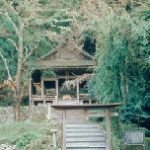
This shrine possesses the National Treasure Gilt bronze Kyozutu, scripture cylinder of Fujiwara no Michinaga, which is a cylindrical container in which sacred scriptures are placed and is made of malleable bronze with plating.
Fujiwara no Michinaga (966 – 1028), a Regent controlling the sovereign through matrimonial links to the Emperor, buried this Kyozutu. After this, Fujiwara no Shoshi, the elder daughter of Fujiwara no Michinaga, had long-awaited an Imperial prince, Emperor Goichijo (1008 – 1036), who entered into the Palace to marry with Emperor Ichijou (980 – 1011).
The letters in this Kyozutu, are thought to be written by Fujiwara no Yukinari (972 – 1027) who was one of Sanseki, the three great calligraphers in the Heian period, in the 10th century.
This Kyozutu, scripture cylinder was derived from the pipe made of gunmetal, which was a bearing for an axle of an ox carriage, used by aristocrats in the Heian period.

Majesty is pumped out all over the country -This well was restored from Asuka Kiyomiharanomiya Palace. Emperor Tenmu (631 – 686) built Asuka Palace during the 7th century, creating a more centralized form of governance. The Asuka Kiyomihara Code, was proclaimed from this Palace. The Emperor’s Palace shifted from a place for the Emperor to pray and live to the place that houses the nation’s original Code.
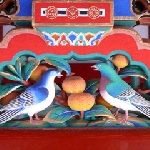
Iwashimizu Hachimangu Shrine enshrines Hachiman Okami in the second Imperial family’s and nation’s mausoleum, following Ise Shrine. The god’s messenger of Hachiman Okami is a dove, a symbol of peace.
The National Treasure Honden, Main Hall has Hiwadabuki, a cypress bark roof constructed by Tokugawa Iemitsu, the third shogun (1604 – 1651). A National Treasure, this shrine was founded in 859 at the unlucky direction of Kyoto, to ward off evil spirits from the Kyoto capital.
Thomas Edison(1847-1931) used to collect bamboo to make filaments that would give his electric light bulbs long life. Ultimately, he used the bamboo from around Mt. Otokoyama of this shrine and made a bulb that lasted over 1,000 hours.
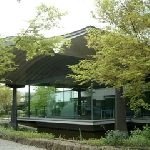
This museum exhibits the life style of the courtier in the Heian period (794 – 1192), at “Heian no Ma,” it’s permanent exhibition. A model of Rokujo-in residence, which is the symbol of the luxury of Hikaru Genji, a protagonist in the Tale of Genji, the 11th century Japanese literature that uniquely depicted the lifestyles of the high courtiers. Hikaru was a superbly handsome man and a genius who lived as an imperial officer.
The residence includes: Shitsurei, setting up furnishing and decoration in the court, Shinden Zukuri, an architectural style of nobles’ residence, an ox carriage, as a play tool, shell-matching game, and Igo, the board game of capturing territories. High-definition video introduces the storyline and charm, and invites you to a beautiful and fragile world. At “Uji no Ma,” the permanent exhibition, the characters of Uji-jujo, Uji chapters of the Tale of Genji, are introduced and the charm of Uji City is guided, too.
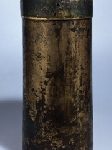
The museum opened in 1897 as the Imperial Kyoto Museum, in a Western-style one-story building, which was designed by court architect Katayama Tokuma (1854 – 1917). It exhibits many cultural assets showing the culture of the old capital from the Heian period (794 – 1185) to the Edo period (1603 – 1868).
It includes works, such as the National Treasure Gilt bronze Kyozutu, scripture cylinder, of Fujiwara no Michinaga – a cylindrical container in which sacred scriptures are placed, made of malleable bronze with plating.
Fujiwara no Michinaga (966 – 1028), a Regent controlling the sovereign through matrimonial links to the Emperor, buried this Kyozutu. Later, Fujiwara no Shoshi, the eldest daughter of Fujiwara no Michinaga, married Emperor Ichijou (980 – 1011) and had a long-awaited Imperial prince, Emperor Goichijo (1008 – 1036).
In this way, the museum safely stores and manages valuable items in other facilities, including national treasures and important cultural properties. This contract work is also an important role for this museum.
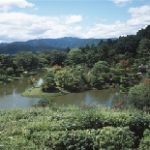
In the middle of the 17th century, the Emperor Emeritus Go-Mizuno (1596 – 1680), the abdicated Emperor built this Imperial Villa. This is a Japanese garden characterized by its use of the natural scenery around it.
The estate incorporates three different plateaus named Upper Villa, Middle Villa, and Lower Villa, each with its own building and garden, as well as paddy fields. A graveled path lined with pine trees crosses over the paddy fields and connects the three villas.
From the Rin’untei Pavilion situated at the highest level in the Upper Villa, visitors can enjoy the dramatic panorama of the pond called Yokuryūchi, which was formed by damming water flowing down the mountain, with the view of the whole city of Kyoto below and the western mountains on the far side. The villa shows the achievement of court culture and aesthetics. The scene is descended from the scene of the 8th century anthology of Japanese poetry, Manyoshu, too.
Visiting the villa requires prior registration.
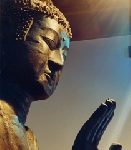
The official introduction of Buddhism in Japan was in 538, at this temple (then, called Gangouji Temple). An envoy of King Shoumyou from Kudara, the ancient Korean kingdom, travelled through the harbor of Naniwa Osaka and up the Yamato River, to visit Asuka, the ancient capital in Japan. The envoy presented the Sutra and a Statue of Buddha to Emperor Kinmei (509-571). In 594, Empress Suiko (554 – 628) decided, by Imperial decree, to promote Buddhism and to construct temples in several places around Japan.
This temple became the cornerstone for promoting Buddhism in Japan. Here, the Asuka Daibutsu, the Statue of Shakyamuni, with its Archaic Smile and almond-shaped eyes, is faithful to the Sutra of Buddhism, in the China North Wei (386-534) style.
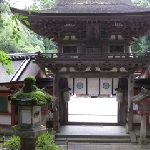
Ise Jingu and Isogami Jingu shrine are the only shrine sites before the Nara period in the 8th century. This shrine enshrines the deity of Futunomitama no Tsurugi, a divine sword, as the main enshrined deity which was worshiped by the Mononobe clan, a powerful military clan by the 6th century.
There used to be no shrine building in this shrine and it was said that sacred treasures were buried at the sacred place behind the worship hall. Futunomitama no Tsurugi and Magatama, the ancient Japanese ornamental stone for sanctuary ritual in the 4th century were excavated in 1874.
This shrine has the high affinity at the ritual system with Ise Jingu and it is thought that this shrine had the role of the armory in the Yamato Imperial Court.
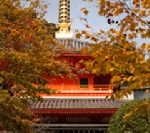
This temple is located on the mid-slope of Mt.Shikisan, at the southern end of the Ikoma Mountains, bordering Yamato Province, Nara and Kawachi Province, Osaka. It is the Shingoshu Juhachi Honzan, the 18 Head Temples of schools in the Shingo sect.
This temple has enshrined Bishamonten, Guardian god of Buddhism, since the Asuka period (550 -710). Myoren Shonin, a monk who was the originator of the restoration of Chogosonshiji Temple, and the main character of “Shigisan Engi Emaki, a picture scroll depicting the stories about Mt. Shigi.” He had prayed for the recovery from illness of Emperor Daigo (885 – 930).
This temple became Kigansho, a temple for the Imperial Court to pray for comfort, home land protection, and long lives of descendants, since the prayer for Emperor Daigo in the Heian period (794 – 1185). The Chinese characters of those three prayers, “Cho”, “Go” and “Son-shi,” became the temple’s name.
The Kaizando, the hall dedicated to the founding priest, enshrines together and remembers the illustrious memories of the Prince Shotoku (574 – 622), as the Founder, Myoren Shonin, as the originator of restoration, with Kanzan Shonin, and Kobo Daishi Kukai (774 – 835), the founder of the Shingon sect.
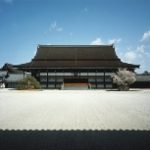
This Palace was rebuilt on Satodairi, a temporary imperial palace built outside of the imperial palace, after the fire in the Kamakura period (1185 – 1333). This palace conveys the ancient shape of the Imperial palace, which was not allowed for the reconstruction, by the Kamakura Shogunate, in the samurai days.
The existing building, reconstructed in 1855, followed the medieval style of the Heian period (794 – 1185). Shishin-den, which points to Polaris in the Palace, is Seide, the Hall for State Ceremonies. In the front of Shishi-den, a Cherry tree and Tachibana, a mandarin orange tree, are planted where the left division of Imperial Palace Guard, and the right division of Imperial Palace Guard, used to stand in the ceremonies.
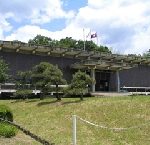
The museum collects and introduces materials such as history, art, archeology, and folklore of northern Kyoto Prefecture. There is the site of Tango Kokubunji, a state-supported provincial temple in the 8th century, in the front of this museum. Kokubunji Temple was ordered to be built in the clean areas of each province.
This place overlooking Amanohashidate – Pine covered, matched that order. But also, the fact that Kokubunji Temple was built at the Harbor of Miyazu, shows that this place was an important gateway to the arrival of other civilizations.
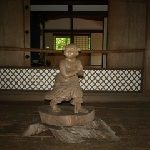
This temple possesses valuable arts and crafts, such as the national treasure Choju Jinbutsu Giga, the illustrated handscrolls of frolicking animals and humans, the statue of Zenzai Doji, the child who traveled to 53 places, in search of wisdom described in the Buddhist texts.
This temple also has the tea garden that Eisai Zenji (1141 – 1215), a Japanese Buddhist priest who brought Rinzai Zen to Japan, used for the tea seeds he brought back from China. It is said to be the oldest one in Japan. This temple was founded by the order of Emperor Konin (709 – 781), and was opened by Myoe Shonin (1173 – 1232), a Japanese Monk, and the originator of the restoration of the Kegon Sect.
Shonin helped save the families of the loser, after the Jokyu Disturbance in 1221, the fight between the retired Emperor and the Kamakura Shogunate. It is said that Ishimizu-in Temple was the residence of Myoe Shonin, which has a roof covered with shingles only, and the style Shinden Zukuri, an architectural style of nobles’ residence, at the beginning of Kamakura period (1185 – 1333).
It reminds us of the style of the courtier at that time.
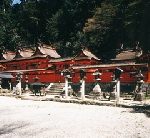
This shrine had been in charge of the diversion of water in the east district of Yamato province since the ancient time of Emperor Suijin. The diversion of agricultural water has been managed under the name of Mikumari no Kami, the deities of the watershed in the Yayoi and Kofun period, BC 4 – the 6 centuries.
Udanomikumari shrine shimosha (lower) is located along a main road from Yamato Nara to Ise Mie, at the foot of Mt. Inasayama. At the top of this mountain, there is a monument inscribed with a poem of Emperor Jinmu’s expedition to the east and a grave of Fumino memaro, the Shogun of Emperor Tenmu in the 7th century.
Fumino had protected the road leading to the capital of the Emperor, Asuka Nara, in the midslope of this mountain.
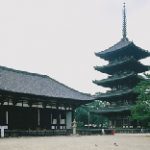
This temple was founded in 730 by Empress Komyo (701 – 760), the consort of Emperor Shoumu. This is the head temple of the Hosso sect of Buddhism, which was brought from India, by Genjo Sanzo (602 – 664), a Chinese monk, the author of “The Great Tang Dynasty Record of the Western Regions,” and the founder of the Hosso sect of Buddhism. The doctrine of the Hosso sect is that unconscious knowledge is at the root of personal existence, deep consciousness is the base, and all consciousness is changeable.
There is the National Treasure five-storied pagoda, which is a thick and grand tower that used to be called “Toin Butsuden-in, the hall in the east” together with Tokon-do, Eastern Golden Hall. Kofukuji Temple used to have three Golden Halls (center/east/west), where many statues of Buddha were enshrined.
Sarusawa Pond, looking up at the tower, reflects on its surface various consciousnesses and thoughts. Like Ninnin Yushiki, the idea that the Surrounding environment and self-consciousness is connected with unconscious knowledge at the root of personal existence.
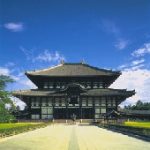
After the Heike (Taira) clan’s south capital burning in 1180, the hall of the Great Buddha was restored with a structure adapted from the Song dynasty style, by Chogen (1121 – 1206), a Buddhist priest serving to collect donations for this restoration.
The craftsmen participated in this restoration, used a hybrid style. At various places, there are narrow posts, a low ceiling, and a calm space, in the Japanese style. The present hall was restored in the Edo period (1603 – 1868), which was built in the hybrid style of the Song dynasty style and the Japanese style.
-As Civilization and Pandemic from the Silk Road, prosperity was also accompanied by calamity.
—The main principle of Todaiji temple is the Great Buddha, Vairocana-Buddha, which means ” shining the light all over the place”, and is considered to be the universal Buddha in the Avatamsaka Sutra.
—The Mandala of Kobo Daishi Kukai (774 – 835), the founder of the Shingon sect, is at the base of this universal Buddha.
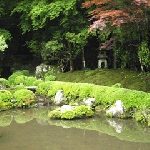
This temple is located in Ohara Kyoto. Kenreimon-in Tokuko (1155 – 1213) was the Empress of Emperor Takakura (1161 – 1181), the mother of Emperor Antoku, and the daughter of Taira no Kiyomori (1118 – 1181), a head of the Heike (Taira) clan who established the first samurai dominated administrative government in Japan.
Kenreimon-in performed religious rites, at this temple, for the salvation of the departed soul of Emperor Antoku and the Taira clan, for the rest of her life, after the Battle of Dan no ura in 1185, a major sea battle between the Minamoto clan and the Taira clan, Heike, in the Kanmon Strait, was completely destroyed by this battle.
This temple is a nunnery in the Tendai sect, which was originally built in 594 by the Prince Shotoku (574 – 622) to perform religious rites for a departed soul of his father. There is Shinjiike pond, a heart-shaped pond, on the west side of the main temple, which was described in “The Tale of the Heike”, Narrative poetry of the struggle between the Taira clan and the Minamoto clan for control of Japan at the end of the 12th century.
Around there, Hime Komatsu, (Japanese white pine), Migiwano Sakura, (cherry blossom to bloom at the end of spring) and moss-grown stones, enable people’s minds to be calm.
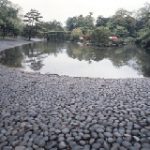
This palace was constructed for the Emperor Emeritus Go-Mizuno (1596 – 1680), abdicated Emperor in 1627. The garden was created with rich beauty and refined simplicity by Kobori Enshu (1579 – 1647): a feudal lord, a master of the tea ceremony, an architect and garden designer.
Its elegant circuit style garden contains two large ponds, the North Pond and the South Pond, as well as two tea house pavilions. A garden path leads around the North Pond and crosses a canal connecting the North and South Ponds by an earthen bridge, and leads around the South Pond.
The shore of the South Pond is famous for its graceful pebbled beach created from stones nearly identical in size and shape. In spring, cherry blossoms, wisteria trellis and azaleas can be enjoyed. In autumn, the garden is ablaze with autumn leaves. This garden exhibits brilliant beauty, with bounded stability, such as stonework. Visiting the palace requires prior registration.
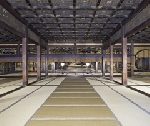
This temple is the head temple of the Jodo-Shin sect (True Pure Land sect) Hongaji School. Konoma, is the reception hall which is a large 203 tatami mat room. The wall painting on the Konoma, Jodan (place of honor), was painted by Watanabe Ryokei (Died 1645), who was the representative painter in the Azuchi-Momoyama period (1573 – 1603), and in the beginning of the Edo period (1603 – 1868).
Ryokei learned the methods of painting under Kanou Mitsunobu (1565 – 1608), who was a head of the Kanou school and painted delicate flowers and birds in a composition with a natural depth.
The aesthetic of the splendid and profound taste is fadeless over 400 years, and overlaps the hardship history of this sect that had survived the Age of Provincial Wars in the 15th – 16th centuries, and returned to Kyoto after Hokuriku region, and Osaka.
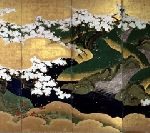
Kasuga Taisha shrine was founded in 768 as a guardian deity of Heijyoukyou, the ancient capital Nara. During the Heian period in the 9th – 12th centuries, the imperial family and aristocracies dedicated many treasures to this shrine, and this museum is referred to as Shosoin, treasure house at Todaiji Temple in Nara, built in the middle of the 8th century, in the Heian period.
This museum possesses the Kasuga gongen genki-e, illustrated scrolls of incarnations at Kasuga shrine, which has an extremely elaborate and brightly colored description, about events that occurred by the god and dream scenes.
The National Treasure, Decorative sword, with Black-lacquered mounting wreathed with strips, was used for ceremonies. It has Nakago, the part that holds the hilt of a straight sword with a double edge.
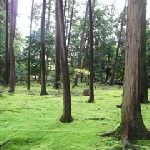
Ganjin (688 – 763), a Chinese monk who helped to propagate Buddhism in Japan, in 754, finally came to Japan during his sixth journey in 753. This temple was opened by Ganjin and contains the grave of Ganjin in the recess of the precincts in the northeast.
The fragrant yellow-white Baxian-hua, in front of the Mausoleum of Ganjin, which came from his hometown of Yoshu, Yang Province, China. It’s flowers bloom in early summer.
The moss garden, which has not changed for 1300 years, is proof of Ganjin’s observation that “the soil is good”, when he arrived at this former residence of Prince Nittabe (died 735), the son of Emperor Tenmu (631 – 686).
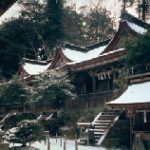
Yoshino mikumari shrine originated at Kannabi, a holy mountain, Mt. Aonegamine(858m), in the northern part of Omine Mountain Range and is the watershed of Yamato Province. This is one of 4 Mikumari Tasha shrine, which managed the diversion of agricultural water under the name of Mikumari no Kami, the deities of the watershed.
Toyotomi Hideyoshi (1537 – 1598), the powerful feudal lord that unified Japan, and the Imperial Regent, made a pilgrimage to this shrine, and prayed for the conception. He was said to have been awarded by Toyotomi Hideyori (1593 – 1615). Hideyori rebuilt the shrine in 1604.
This shrine possesses an undisclosed goddess statue, which is said to represent the characteristics of the Kamakura sculpture with its Gyokugan, eyes made of crystal. It might have been influenced with the culture along the Kinokawa River that connected with Nara Busshi, the sculptor of Buddhist Statues in Nara.
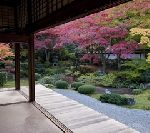
This temple is located at the foot of Mt. Tsukinowa in Higashiyama, Kyoto, and has an Imperial family grave, which held the funerals from Emperor Go-Yozei (1571 – 1617) to Emperor Komei (1831 – 1866) in the early modern times and enshrines Tsukinowaryo, an Imperial Mausoleum.
This temple was founded by Gazirin Daishi Shunjo (1166 – 1227), a dharma-seeking priest to the Son Dynasty, and a founder of the Shingo Ritsu sect, who came from Higo Province Kumamoto.
The main complex of buildings was built in the architecture style of the Song Dynasty (960 – 1279), in 1226. This temple emphasized the Buddhist precepts, and became the place where priests practiced the Shingo Ritsu sect (Hokyo-Ritsu), which is with Yonshu kengaku, learning the four sects of Ritsu, Esoterism, Zen and Pure Land.
Clear water came out from the spring in the construction of the main complex of buildings. As a result, the name of this temple means “The temple that springs out clear water”.
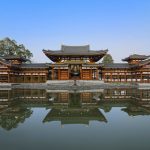
This temple was built on the site of a villa, in the year when it was said that it would become Mappo-no-yo, the destined downfall of Buddhism. In 1053, the following year, its Amidado, this temple was built, dedicated to Amida Nyorai, Amitabha, the principal image of Buddha in Pure Land. All courtiers in the Heian period (794 – 1185) wished for Raigo, the coming of Amida Buddha to welcome the spirits of the dead. The courtiers worked hard to create a scene for when the Amida Buddha arrived from the Western Pure Land.
The National Treasure, a statue of Amida Nyorai, is enshrined in the Byodoin Hou-ou-do, Phoenix Hall. This statue was made in 1053, by Buddhist sculptor Jocho (died 1057) in the latter part of the Heian period. It was completed with the Japanese technique, Yosegi Zukuri, where wood blocks were assembled, after treated and carved. The expression also shows the completion of Wayo, traditional Japanese-style.
The Wayo of expression is the peaceful face rounded buccal surface, the large eyes with downcast eyes, gazing quietly at the worshipers, and the expressions of unlimited kindness. The statue has no difficulty in pulling its chest and its back slightly rounded, with no feeling of tension anywhere.

In the Nara period (710 – 794) and the Heian period (794 – 1185), government offices and the Great Temple had Shoso, Treasure Houses for important goods. Some districts brought together several Shoso, called Shosoin. The Shosoin preserved the treasures of Emperor Shomu and Empress Komyou.
These treasures were managed by Todaiji temple under the Imperial Court jurisdiction for over 1000 years. Today, Shosoin is managed directly by the Imperial Household Agency, in view of the importance of the treasures.
The Shosoin Exhibition is held once a year at the Nara National Museum, and dozens of these treasures are exhibited solely for this event.
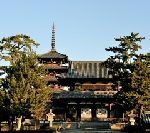
The World Heritage Site, Horyuji Temple, is located against the backdrop of the hillock of Yata, which has beautiful green pine trees. It was founded at Ikaruga Palace overlooking the Yamato Plain in about 607 by the Prince Shotoku (574 – 622), who developed the state, including authoring the Seventeen-Article Constitution, and dispatching envoys to the Sui Dynasty (581 – 619).
The building caught fire and was reconstructed in the Asuka period (550 – 710). It is Saiin Garan, the Western Precinct, which is now the oldest wooden structure group in the world. Yumedono, Hall of Dreams, was built at the site of the Ikaruga Palace in the Nara period (710 – 794) for praying for the Bodahi, the enlightenment of Prince Shotoku. It is now the central wooden structure in the Toin Garan, the Eastern Precinct.
You can see a lot of Buddhist statues from the Asuka period (550 -710) and other arts and crafts, including the Wall painting of Kondo, main hall.
–the Wall painting was painted around the end of the 7th century and is considered to be representative of Asian ancient Buddhist paintings along with the Ajanta Caves in India (BC 1st -2nd century and 5th – 6th century), and the Dunhung Mogao Caves in China (4th – 13th century).

This museum is at a highland overlooking Kaerumataike Pond (also called Sugawara Pond), and is surrounded by a natural garden called the Bunkaen, which emphasizes harmony with nature.
The Picture Scroll of the Tale of Nezame is a cultural asset, which this museum proudly celebrates on its 60th anniversary. It is thought to be the work of Sugawara Takasue no musume, the daughter of Sugawara Takasue (1008 – 1059?), a Japanese author of Sarashina Diary, writing of travels and pilgrimages.
This picture scroll describes the strange fate of Naka no Kimi, a princess of the Imperial Family, in her romance with Chunagon, a state councilor, who was a sister’s husband, Sadaisho, Major Captain of the Left Division of the Inner Palace Guards, and Emperor Reizei, who was in the Tale.
This picture scroll, with 4 columns of pictures and 4 columns of writing, is still preserved, which has the depiction of nature and the interior is delicate and full of elegance. This is one of the few picture scrolls of the Tale from the Heian period (794 – 1185), and a masterpiece.

This shrine was founded in 1889 and enshrines Emperor Go-Daigo (1288 – 1339), who successfully overthrew the Kamakura shogunate and brought the Imperial House back into power (1333 – 1336). The Ashikaga shogunate split the imperial family into two opposing factions: the Ashikaga backed Northern Court, situated in Kyoto, and the Southern Court, based in Yoshino Nara, led by Go-Daigo and his later successors.
This shrine is on a 8.9ha site and has a view of Mt. Kongouzan (1125m) and Mt. Katsuragisan (959m) in the west and Mt. Takamisan (1235m) in the east. This shrine’s main building faces the direction of Kyoto, from where Emperor Go-Daigo eagerly awaited the return of the Emperor. This shrine building made of all-cypress, represents modern shrine architecture.
The main building faces the north was built in Nagare Zukuri, an asymmetric, gabled roof, with one side of the roof gabled roof and the other side, non-gabled. This worship hall is built in Irimoya Zukuri, building with gabled – hipped roof. This Shinmon, shrine gate, and other buildings use Kiritsuma Zukuri, a gabled roof. This shrine’s architecture is one of the most elegant, splendid buildings.
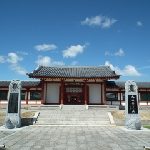
This temple was founded over three generations of Emperor, Emperor Tenmu (631 – 686), Empress Jito (645 – 702), and Emperor Mommu (683 – 707). This temple was the head temple of the Hosso sect of Buddhism, which was brought from India, by Genjo Sanzo (602 – 664). Sanzo was a Chinese monk who travelled to India over 17 year. He wrote “The Great Tang Dynasty Record of the Western Regions”, and founded the Hosso sect of Buddhism.
This temple enshrines the parietal bone of Genjo and the magnificent wall painting of “The Great Tang Dynasty of the Western Regions”, by Hirayama Ikuo (1930 – 2009), a Japanese painter. The work was dedicated at the Genjo Sanzo-in hall. There is the magnificent 75 sq. cm, 248 paneled coffered ceiling.

In the middle of the Nara period (710 – 794), Kunikyo Shiga was newly built as the capital, leaving the Heijyoukyo Nara. By starting the construction of the Shikagaki Palace as the Imperial villa, Kunikyo became virtually the capital of Japan in 745. The palace currently is under the rice paddies about 17.3 ha which was designated as a national historic site.
However, the site of large scale buildings of Chodo, a place where the Emperor works and meets with the vassals, was discovered by excavation research. It shows some of the thought that Emperor Shoumu (701 – 756) had about the palace construction. There is an exhibition room that explains the contents of the excavation research.
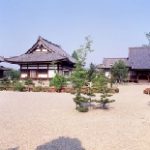
The temple was built by Emperor Shomu (701-756) for the tomb protection of the Prince Shotoku (574 – 622) at Taishi-cho, Minami Kawachi county, in Osaka. A National Treasure, Taishido, the spiritual center, represents Momoyama era (1573-1603) architecture. It is enshrined by a statue of the Prince Shotoku, when he was 16 years old, and which is decorated with long-legged balustrades and it has Onion-shaped ornaments.
Praying to the Prince Shotoku began during the Tenpyou period (710-794). In those times, the Prince Shotoku was revered as a Kannon: the Buddhist Goddess of Mercy,of salvation bodhisattva. During the Heian period (794 – 1185), Mapposhisou, the belief in the end of the world spread. Shitennoji and Eifukuji temples were recognized as sacred places. The faith in Prince Shotoku was reborn as Jyoudo, Pure Land Buddhism, with the invocation of the Amida Buddha, Amitabha.

This museum is adjacent to Osakajo Castle, and introduces the Osaka of the Ancient Period, Medieval Ages and Early Modern Period, Modern and Contemporary Period. And you can see the Naniwa no Miya, Naniwa Palace ruins excavated and preserved underground.
There was a huge Kawachi Bay in the northeast of the Uemachi Upland, where the museum is built. It was converted to sedimentary plains during the Jomon period (16,000 years ago – 3,000 years ago), the Yayoi period (the 4th BC – 3rd century) and the Tumulus period (the 3rd– 7th century), where continental and peninsular cultures were introduced.
You can realize the conversion of ancient geography and history here.
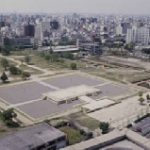
The Naniwa no Miya, Naniwa Palace, which is mentioned in Nihon Shoki, the oldest chronicles of Japan, was located south of Osakajo Castle and northeast of the ancient Uemachi Plateau. There are the remains of earlier and later settlements. Later, the palace of Emperor Shoumu (701 – 756) was built with the Chinese-style corner stone and roofing tiles in 744.
The earlier palace of Emperor Kotoku (594 – 654), built 80 years before Emperor Shomu’s, used pillars placed directly into the earth and had a roof of either shingles or cypress bark, in the ancient Japanese style.
The imperial zone of the Later palace was 185 m east to west, 200 m north to south. There were Octagon storied buildings, in the Chinese-style, from side to side.
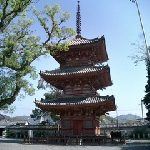
This temple was built at Ikaruga villa of the Prince Shotoku (574 – 622) manor, which was developed from Harima Province’s paddy to be gifted to the Prince by Empress Suiko (554 – 628), as the reward of the Prince lecturing Shoma-gyo Sutra, the Shri-mala Sutra to the Empress in 606. The Prince put 4 stones of border sign at that villa, built the cathedral of this temple inside and named it as Ikarugadera temple.
Ikaruga came from the Villa Name Ikaruga-tenchin which was located along near the pier of the Yellow River Basin. Kentoushi, Japanese missions to Tang Dynasty (618 – 907) used to land at the pier and to visit Ikaruga-tenchin.
In the main hall, Shotokuden, the statue of Prince Shotoku which wears clothes with implanted hair, is enshrined rarely shown to the public. And the finial of three-storied pagoda has magical balance to the sky.
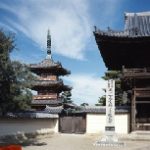
This temple is originated from the Prince Shotoku (574 – 622)’s “LOTUS SUTRA” lecture, and has a rich collection of architecture, Buddhist images, and paintings related to the Prince Shotoku (574 – 622).
Eben, the monk from Goguryeo (BC37-668) on the Korean Peninsula, escaped to the Harima region, to escape an anti-Buddhist movement. Prince Shotoku visited here and asked Eben to give him lectures.
The Prince built a small spiritual center and the history of this temple started. This temple’s name, Kakurin, is derived from the image of a white crane, coming from the forest, grieving at the death of Buddha.

The decree to construct the Great Buddha of Rushanabutsu, Vairocana, was applied at Shigaraki no miya Palace, in 743, and the construction of Kokatera Temple began. Emperor Shoumu (701 – 756) hoped that the palace would be the capital of Buddhism and was passionate about its construction. But his thoughts were not realized at that time.
The emperor built the Great Buddha of Todaiji Temple Nara and completed his passion in 752, after returning to Heijyoukyo Nara. Currently, Kokatera Temple Site, about 3.3 ha, is designated as a national historic site, and more than 300 cornerstones remain in the hills, and the scenery of the past remains in the pine forest.
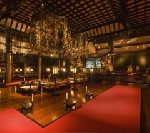
Kobo Daishi Kukai (774 – 835), the founder of the Shingon sect, said that he would definitely return after 5,670 million years, and was dead at the age of 62 in 835. The path of about 2km from Ichinohashi of Okunoin Temple to the mausoleum of Kukai is full of calm air.
Kukai traveled by an envoy ship to the Tang Dynasty (618 – 907), received the Esoteric knowledge, developed Mt. Koya (Height 800m) to resemble Hachiyo-renge, lotus flowers with eight leaves, and built the field of Mandala, a geometric configuration of symbols used as a spiritual guidance tool in Buddhism in Japan.
You can also feel the Current of life and consciousness of Kukai, which moved northward to East Asia.

The museum introduces the history and culture of the Prince Shotoku (574 – 622) manor, Horyu-ji Temple manor and Sanyo Road, the major arterial road of western Japan. Named Ikaruga, pictures and records from the Northern and Southern Court period (1336-1392) convey the existence of the manor during the Medieval Ages. Ikaruga means “pigeon”and came from the Villa’s name, Ikaruga-tenchin, which was located near the pier of the Yellow River Basin.
Kentoushi, who made Japanese missions to China during the Tang Dynasty (630-894), used to land at that pier to visit Ikaruga-tenchin. Kentoushi brought Buddhism and centralization back to Japan, thereby advancing civilization. The name Ikaruga is linked to civilization, much like Houruji temple.
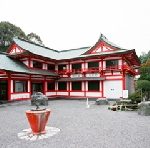
The shrine is dedicated to the Emperor Tenji (626-672), who moved the capital to Otsu Kyo in 667. Time management began in Japan at Otsu Kyo. Time was measured by the leakage of the water clock, which long existed in Egypt, Mesopotamia, and, China, and was informed by the ringing of the bell.
This clock and treasure museum exhibits ancient eastern and western timepieces, including the Japanese clock, along with the offerings of the past. The beginning of civilization is time management.
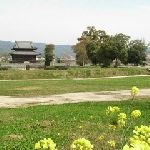
The Kii Kokubunji Temple site is one of the 60 Kokubunji Temples built, across the Provinces. These were state-supported, by the imperial decree of Emperor Shoumu (701 – 756) in 741. The foundation stone of the seven-storied pagoda remains from the original.
The tombs along the Kinokawa River conveys the glory of the powerful family. The gorgeous excavated burial accessories, such as golden Magatama, the ancient Japanese ornamental stone, harness the connection with the Korean Peninsula.
The Kii family was Kuni no Miyatsuko, a regional administrator, and served Emperor Nintoku in the 4th century. Nintoku was the prince of Emperor Ojin, and Kawachi Dynasty in the 5th century, which was based in the Uemachi plateau, overlooking Osaka Bay.
It is said that the founder of the Kii family was Tekeushi no Sukune, a legendary Japanese Imperial Regent, from a family of immigrants.
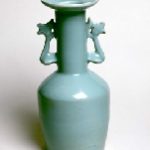
This museum holds various planned exhibitions six times a year, which center on Oriental antiquities. It possesses Ukiyoe, Japanese woodblock prints, Western modern art, and old maps. It has a Japanese garden, tea room, music hall, and creative classroom connected to the museum, providing a base for cultural activities in Izumi City.
It’s possessions include Houomimihanaike, a Celadon glazed vase with a handle of Hoo, a mythological sacred bird that drank from a sacred fountain and stayed at Aogiri, a Chinese parasol-tree. It is a work of the Southern Son Dynasty (1127 – 1279), and the glaze of Funseishoku, a moist and calm blue, was thickly applied to the grayish white porcelain that contains some iron content.
This vase was once given to the Tokugawa Shogunate, Toufukumon’in Masako (1607 – 1678), a daughter of Tokugawa Hidetada, the 2nd Shogun and Chugu, (second consort of the emperor) (1625 – 1629) of the Emperor Go-Mizuno (1596 – 1680), and Emperor Go-Sai (1633 – 1654).

The Kawachi Ichinomiya, Kawachi Osaka is the most important provincial Hiraoka Shrine. It is located along the main road that leads to Nara, beyond the pass of the Ikoyama Mountains, and is at the foot of Mt. Kamitsudake(315m) Higashi Osaka. It was formerly the Kasuga shrine.
The main building of the four vermillion buildings is Hiraoka Zukuri. A roof extends over the main entrance, covering a veranda, which faces to the west. This shrine worships Amenokoyane no mikoto, a male deity, the god that performed Norito, incantations, as the enshrined deity.
The god performed Norito and held out the divine mirror in Amanoiwato, the Cave of heaven, in which Amaterasu Oomikami: Sun Goddess and the Japanese Emperors are considered to be direct descendants of Amaterasu, hid herself.
The god is Kasuga Gongen, the manifestation of Buddha in the form of Kami, which is the ancestor god of Sekkanke, the family that produced the Regent and the Chief Adviser to the Emperor, the Fujiwara clan, in the 9th – 11th centuries.
This shrine transferred the ancestor god, enshrined at Kasuga Taisha shrine in Nara, which was built in the transfer of the capital to Heijyoukyo Nara, in the 8th century.
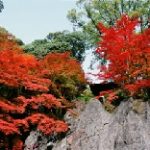
It is said that Murasaki Shikibu (973/978 – 1041/1031), a Japanese novelist, poet and court lady, confined herself to this temple to pray, for seven days, and got the idea for the Chapter of Suma and Akashi in the Tale of Genji, on the night of the harvest moon on the 15th day of the 8th lunar month. The Tale of Genji was a unique depiction of the lifestyles of high courtiers in the 11th century, by Murasaki Shikibu. Therefore, the Room of Murasaki Shikibu, was built at the main temple.
This temple is one of Japan’s leading temples of Kannon, the Buddhist Goddess of Mercy, and a Sacred Pilgrimage site. It was built on a massive bedrock of a natural monument, wollastonite, and is located on the right bank of the Seta River, flowing out from Lake Biwa.
This temple was a desired place for the court ladies to pray to Nyonin Jobutsu, a woman becoming a Buddha, during the Heian period (794 – 1185). She believed the present life is a just way to connect to the future life.
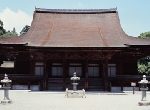
This temple was built beside Lake Biwa during the 7th Century. The spring at this temple was used for the ritual bathing of newborns of Emperors and Empresses. The principal image of Kanoundo is Nyoirin Kanoun, the Bodhisattva of Compassion. This temple used to prohibit women from making a pilgrimage. But Kanoundo was an exception. Nyoirin Kanoun, always a woman’s ally, has collected much reverence.
This temple’s Kangakuin was founded as a place of study, during the Kamakura period (1185 – 1333). In 1600, it was rebuilt as Kyakuden, reception hall that hosted guests such as the Imperial family. The wall paintings for Ichinoma and Ninoma are drawn in the intelligent and gentle style, by Kanou Mitsunobu (1565 – 1608), who was the eldest sons of the genius painter, Kanou Eitoku (1543 – 1590): one of the most influential Japanese painters, and a head of the Kanou school of Japanese painting.
Ichinoma, the meeting room, was drawn with the immortal mountain world in Taoism in Konpekiga, slide screen painting with gold-foil-pressed paper. Ninonoma, the waiting room, was drawn with 24 screens of colored paintings of flowers and birds.
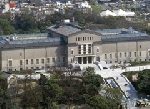
The main building of this museum, which was built with the hybrid style of Japanese-Western design, was registered as a registered tangible cultural properties in 2015.
This museum’s collection contains about 8,500 items including paintings, sculptures, crafts, etc. from Japan and China.
This museum has two worldwide collections: the collection of Abe Fusajiro (1868 – 1937) of Chinese paintings and calligraphies, and the collection of Yamaguchi Kenshiro (1886 – 1957) of Chinese Buddhist sculptures.
Its collections are also a wide variety of content such as: materials related to Ogata Korin (1658 – 1743), a Japanese painter, lacquerer and designer of the Rinpa school, Netsuke, a carved Japanese ornament, Inro, a pillbox, and modern paintings.
—This museum is located in the Tennoji Park. The Transmission of Buddhism — the official introduction of Buddhism to Japan — was held at Naniwa Osaka, in the 6th century. Shitennoji Temple was built at Naniwa Osaka by the Prince of Shotoku (574 – 627) in the Asuka period (550 -710), which was the oldest Kanji, state-sponsored temples. Tennoji Park is derived from the Shitennoji Temple.

There are many huge tumuli represented by Nintoku Tenoryo Kofun – the Imperial Mausoleum of Emperor Nintoku (the 4th and 5th centuries) in the The Mozu Tumuli Clusters, registered as a World Heritage Site in Sakai City. This museum permanently exhibits “The Era of Giant Tumulus” and “The Era of Free City Sakai,” which flourished in foreign trade.
This museum introduces the history of Sakai City at the four corners, which are “Tumulus – Nintoku Tenoryo Kofun”, “Free City Sakai”, “Sakai Industrial Culture” and “Prayer and Festivals”. In addition, special exhibitions (once a year) and temporary exhibitions (several times a year) are also held.

Akashi has been a scenic spot since ancient times, and it has been said that this temple was “Akashi Nyudo no Hamabe no Yakata” – the beach residence of Akashi Nyudo, the father of Lady Akashi and a cousin of Genji’s mother in the Tale of Genji. The Tale of Genji is a unique depiction of the lifestyles of high courtiers in the 11th century.
This temple is in Taikancho, Akashi. Its name is a collective name of two temples: Kaiko-in Temple, and Enju-in Temple. At this temple, there is a stone monument, “Hikaru Genji Koseki Akashi no ura no Hama no Matsu” – A stone monument of the model site of the Chapter of Suma and Akashi in the Tale of Genji, made by Matsudaira Tadakuni (1597 – 1659), the lord of Akashi Domain, Harima Province.
At the Enju-in Temple, there is Karesansui, a dry landscape garden, said to have been made by a great swordsman, Miyamoto Musashi (1584 – 1645). Musashi was a Japanese swordsman, writer and painter, who had taken care of the castle town layout, in the building of Akajijo Castle.
Aware — sorrow, pathos, and longevity — are gathered here
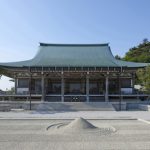
In ancient times, Mt. Maya overlooked the eight counties from the summit, and was named Hashumine, the eight province ridge. The temple was built on that mountain by the order of Emperor Koutoku (596-654) in Naniwa no Miya Palace. He routinely dispatched the Kentoushi ship, taken by the Japanese envoy to visit the Tang Dynasty in China, via the Seto Inland Sea.
The Indian high priest, Houdo Sennin(Hermit) opened this temple in 646. After that, the Japanese teacher, Kobo Daishi, returned from Tang Dynasty China and enshrined the statue of Buddha’s mother, Maya. From that point, the mountain became name of Mt. Maya.
From “Kikuseidai,” an observation square at Mt. Maya, you can see the sparkling stars at night. And during the day, you can see Namba’s palace and Osakajo Castle.
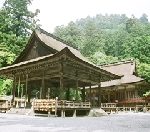
This shrine was worshipped as a shrine for the protection of the Enryakuji temple Shiga, when Saicho, Dengyou Daishi (767 – 822), the founder of the Buddhist Tendai sect, built the temple at the top of Mr. Hiei.
This shrine became Taisha, a Grand Shrine, to protect people from evil and disasters at Kimon, the unlucky quarter of the northwesterly direction, of the nation’s new capital, Heiankyou, Kyoto. This shrine’s main building in the west was built in 1586 with Hiyoshi Zukuri, a gabled roof with verandas on the sides and has Hiwadabuki, a cypress bark roof.
Although the roof looks like Irimoya Zukuri, a building with gabled – hipped roof, from the front view, the roof is featured in Sugaruhafu style, with long wide front bargeboards, with raised eaves on the back, and the edge of the roof is shorter as if being cut down vertically.
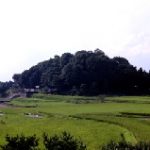
This mausoleum is a long-sided tomb, which is built with three long steps from both the east and the west. It was thought to have had two lateral stone chambers inside. It is also presumed that at one of them, Prince Takeda was buried who passed away earlier, by the will of Empress Suiko (554 – 628).
This mausoleum is located along the oldest national highway, Takenouchi Kaido Road which connects to Naniwa harbor, which was also built by the order of the Empress. It is thought that this mausoleum’s construction was also related to the historical enterprising of the Empress.
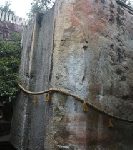
A giant stone structure, with a width of 6.4 m, a height of 5.7 m, and a depth of 7.2 m, is enshrined at Mt. Hoden. It is called Ishino (Stone’s) Hoden. The giant stone structure is considered as floating, in masonite terms, and is called the Ukiishi, floating stone.
According to Harimanokuni fudoki, the topography of Harima Province, this shrine was developed in the 6th and 7th Centuries. Before the construction of the stone palace was completed, the two gods of Izumo Province entered this giant stone and graciously settled the land.
Here, they point out the relationship between this giant stone and the stone structure Masuda Iwafune in Kashihara city, Nara Prefecture.

The Himeji City Museum of Art introduces the works of great artists associate with Himeji.
Matsuoka Eikyu (1881 – 1938), was the younger brother of Yanagita Kunio (1875 – 1962), a scholar and the father of Japanese native folkloristics. He studied painting at the Japanese painting department of the Tokyo School of Fine Art, and expressed modernity using Yamato-e, classical Japan decorative paintings.
He was also passionate about the restoration of Yamato-e, with outstanding artistic power. His art work of Tokudaiji Itsukushima Mode, to make a pilgrimage to the Itsukushima Island, came from volume 2 of the Tale of the Heike, Narrative poetry of the struggle between the Taira clan and Minamoto clan for control of Japan, at the end of the 12th century. Tokudaiji Sanetada (1139 – 1192) did not get the desired position in the Imperial Court. Along the recommendation of a person, Sanetada made a pilgrimage to the Itsukushima Island, which was worshipped well by Taira no Kiyomori (1118 – 1181), a head of the Heike (Taira) clan, who established the first samurai dominated administrative government in Japan. Kiyomori was very pleased, when he heard of the pilgrimage. And he gave a good position in the Imperial Court to Sanetada. This was the story of the Tale of the Heike.
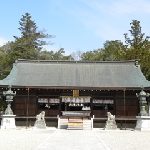
This shrine is located on Awaji Island Hyogo, which was called Onokoro Island, in Japanese mythology.This shrine is the oldest shrine that enshrines Izanagi, a male deity who fathered Japan and Izanami, a female deity who mothered Japan, in the mythology of Kuni-umi (the birth of the land of Japan) and Kami-umi (the birth of the God of Japan). They are the main deities in the first enshrinement in age of the God Description at the Kojiki, the records of Japanese Ancient Matters and Nihonshoki, the Chronicles of Japan.
The site of this shrine has been transmitted as the site of Kakurenomiya, the Hidden God Palace of Izanagi, and the place where the sun’s orbit crosses, from Kumano Wakayama to Hyuga Takachiho Miyazaki on the winter solstice, from Ise Miyazaki to Tsushima Nagasaki on the vernal and the autumnal equinox, and from Shinano Suwa Nagano to Izumo Sshimane on the summer solstice.
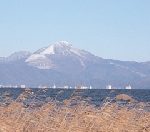
Mt. Ibuki (Height 1377m) is a Mountain looking up from the plains of the northern part of Lake Biwa. This driveway leads close to the summit, and the panoramic view is spectacular. It is a mountain that has been closely associated with people’s lives since ancient times, including as a source of medicinal herbs.
It is described as a mountain of gods, in the Kojiki, the records of Japanese Ancient Matters and in Nihonshoki, the Chronicles of Japan. Yamatotakeru no mikoto, a Japanese legendary prince of the Yamato Dynasty, and the son of Emperor Keiko, fought a white wild boar, which was the embodiment of Araburu kami, – a miraculous spirit of this mountain.
– Later, Yamatotakeru became exhausted at Kameyama, in the Suzuka Pass Mie, on the way home to Yamato Province, Nara. When he died, he made a poem, Yamato ha Kunino Mahorobo Tanazuku Aogaki – Yamato is the best province in Japan. Yamato is surrounded by mountains, like green hedges that overhang in layers. Yamatotakeru, healed the wound by the white wild boar, with the clear water at the foot of this mountain.

This park faces an artificial lake made of the Oi Dam, to block the Kiso River. The surface of the lake is colored by the changing of the four seasons. The red Enakyo Ohashi Bridge has strangely shaped rock and oddly shaped stones lining both sides. There is the Nationally designated natural treasure, Kasaiiwa Rock, in Oicho, Ena. The top is like giant mushroom, with a circumference of about 10 m, and is biotite of granite.
It is said that the placenta was buried at the summit of Mt. Enasan, at the time of the birth of Amaterasu Oomikami: Sun Goddess and the Japanese Emperors are considered to be direct descendants of Amaterasu. Mt. Enasan overlaps with the ancient meaning of mountain – “the God of mountain is female”, was the thought in ancient Japan.
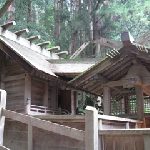
This shrine is the oldest Shinmei-zukuri, a style of shrine architecture, based on that of Ise Jingu. It has 1000 years old Japanese cedars as its enshrined object. The simple, straight white wooden structure, built along the slopes of the mountain, creates a solemn atmosphere.
The distinctive feature of Shinmei-zukuri is that the gable roof and the entrance are not at the side of the roof edge but at the front of the ridge. This entrance style is used for the shrine dedicated to the god of Amatsukami: the god family of Amaterasu Oomikami, Sun Goddess and the Japanese Emperors are considered to be direct descendants of Amaterasu, the same Heavenly gods as at Ise Jingu.
Nishina was the place in the manor that had the Mikuriya, the kitchen of Ise Jingu in the Heian period (794 – 1185).
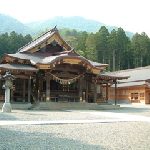
Mt. Yahikoyama which borders Niigata city and Nagaoka city, has the full view of the Japan Sea and Sado Island. The mountain trail runs along side Akihiko Shrine. Yahiko shrine is the Echigo Ichinomiya, Niigata’s most important provincial shrine, and it has been worshiped since ancient times.
Amenokaguya no mikoto, the son of Nigihayahi no Mikoto is enshrined here. Amenokaguya no mikoto, is the God which conveyed the basics of salt-making techniques, fishing, and rice cultivation, by the order from Emperor Jinmu.
At this treasure hall, the relics of revered warriors such as Minamoto no Yoshiie (1039 – 1106), the head of Minamoto clan, and Uesugi Kenshin (1530 – 1578), the feudal lord of Echigo Province, are exhibited.
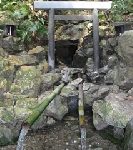
This main shrine is Naiku, the Palace of Ise Jingu shrine. In the past, when Yamatohime traveled on a Shima cruise, to seek offerings to the Ise Jingu shrine, it is said that it was built in this place and enshrined the soul of Amaterasu Oomikami: Sun Goddess and the Japanese Emperors are considered to be direct descendants of Amaterasu, a major deity of the Shinto religion. The fishermen and Ama, a female diver, believed deeply in this shrine.
Shima’s ocean on the rias coast is rich in fish and shellfish, including shrimp. Its scenic landscape is stated in Manyoshu, 8th century anthology of Japanese poetry. You can see the mysterious scenery of Shima from the Tomoyama observation platform on the way to this shrine.
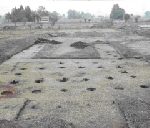
The Echu Tonami Plain, depicted in Todaijigoshouenezu, Todaiji temple in Nara, was a rich area to support the Capital in Nara era (710 -794) with tribute and labor. There used to be a manor office of Todaiji temple in the early Heian period (794 – 1185). In the center of the Takase Archaeological Park, there are three buildings ruins with pillars roots of 20-30cm in diameter.
At around Takase Shrine, Jomon period stoneware specialties were offered to the Meiji Emperor were also excavated. Those show the existence of excellent culture since ancient times.
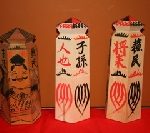
A clean and favorable place was chosen, in each province, to build Kokubunji Temple, a state-supported provincial temple, during the 8th century. Shinano Kokubunnji Temple and Shinano Kokubun-niji Temple, a state-supported provincial nunnery temple, were built in Ueda, along the Chikuma River. This was near the Tosan-do Road, the main road that divided the country, situated along the central mountains of northern Honshu, Tohoku region, in the middle of the 8th century. The Shinano Kokubunji Historic Park and the precincts of this temple have a freshness and cleanness.
The temple distributes hexagonal wooden amulets with the letters ” Sominshorai Shison-no-mon, the gate for the descendants of Sominshorai: the deity who guards against epidemics”, which is related to the faith in Gozu Tenno, the deity of Disease, in India. It overlapped as far back as the Tempyo era (729 – 749), during the Nara period (710 – 794).
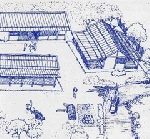
It is said that Takasejinja shrine was also the Echuu Ichinomiya, Echuu Toyama most important provincial shrine.This museum exhibits Imperial Treasures, excellent stone products in the the Jomon period (16,000 years ago – 3,000 years ago), which were excavated from the area nearby Takasejinja shrine and offered to Emperor Meiji (1852 – 1912).
The Echuu Tonami Plain had supported the capital with tribute and labor since the Nara period (710 – 794), which was described at Todaiji Goshoen Ezu, the painting of the manor of Toudai Temple in Nara.
There are three building traces, in the center of Takase Iseki Park, the archaeological park, which leave pillar roots with a diameter of 20 to 30 cm. It is the site of the manor management office of Todaiji Temple at the beginning of Heian period (794 – 1185).
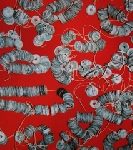
This museum exhibits 8 themes about State-supported provincial temples in Ueda and Chisagata, during the mid 8C, Kokubunji and Kokubunniji were built to be certified through the excavation survey results. Those themes are from the era when people emigrated and lived, through the Kokubunji Construction, during the Nara period, until the Heian period (8-12C).
From the corridor of Kokubunniji, the second-oldest coins, Wadokaiho, have been excavated. It also shows how this area may have been the capital of Shinano Nagano region
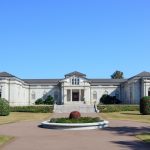
This museum shows the history of the Ise Jingu Shrine Removal and the Imperial court ceremony here. “Ranomurasakino Onsashiha”is like a “red purple Ayano Silk Tent”, which was held over the noblemen, similar to a Sachiba (fan) or a Kinugasa (parasol). It displays a model of clay images and that were painted on the walls of Takamatsuzuka, an ancient tomb from the Tumulus period (3-7th century).
The “Ranomurasakino Onsashiha” was made with a special method to intertwine the warp and the weft to create a see-through silk cloth. The succession was interrupted by the Onin War (1467 – 1477), the controversy over the successor of the Ashikaga Shogunate, between Hosakawa Katsumoto (1430 – 1473), Ashikaga Shogun’s deputy, and Yamana Sozen (1404 – 1453), the Shugo, Governor of Provinces in the western part of Japan.
Living national treasure, Itagawa Heiro (1898 – 1988), a Japanese Dyeing and Weaving artisan, restored it.
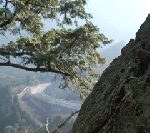
The Suzuka Pass is located on the route from Kinai region, provinces surrounding Kyoto and Nara to Tokaido, Chubu, and Kanto regions. The summit of Mt. Nyudogatake, has wonderful views of the Suzuka Mountains, including Mt. Gozaisho, and Ise Bay.
Yamatotakeru no mikoto, a Japanese legendary prince of the Yamato Dynasty, and the son of Emperor Keiko, became exhausted along the Suzuka Pass on his way home to Yamato Province, from his expedition to the east, and died. He was father of Emperor Chuai, in the Miwa Dynasty, before the Kawachi Dynasty in the 5th century.
When he died, he made a poem, Yamato ha Kunino Mahorobo Tanazuku Aogaki – Yamato is the best province in Japan. Yamato is surrounded by mountains, like green hedges, which overhang in layers. It is said that after making the poem, he transformed to Hakucho, a swan, which returned to Yamato Province by flying.
The tomb of Yamatotakeru no mikoto, the Hakuchoryo burial mounds, is surrounded by deep and quiet greenery.

Nabari was an inn during the Nara period (710 – 794). Prince Oama (631 – 686) who became Emperor Tenmu in 673, stayed her during his escape to the east provinces during the Jinshin War in 672. This was a war of succession between Prince Oama and Prince Otomo, who was son of Emperor Tenchi (626 – 671).
Nabari was developed as the manor of Todaiji Temple in Nara in medieval Japan, and the trees from this area are still used for Omizutori, a water-drawing ceremony performed at Todaiji Temple on March 13. This temple is a treasure trove of Buddha statues, including the wooden statue carved from one tree of the Sacred Kannon, the Buddhist Goddess of Mercy, and the statue of the eleven-faced Kannon, the Buddhist Goddess of Mercy.
This Kannon was made using Yosegi zukuri, the technique of assembling carved and treated blocks made from cypress, developed in the latter part of the Heian period (794 – 1185). These forms expressed total peace, like a full moon, and represent the Fujiwara era of Kokufu Bunak-Japan’s original national culture (894 – 1185).
Nabari can be seen from Mt. Akibayama behind the main hall.
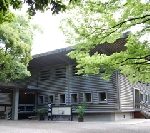
“The Harmonic stream of Agricultural Industrialization in the Yayoi period (the 4th BC – 3rd century)” -This shrine enshrines Atsuta-no-Ookami, as represented by the sacred sword of Kusanagi-no-tsurugi, one of the Imperial symbols. This shrine is at the Atsuta plateau, in front of the fertile Owari Plain, and has preserved the sacred forest. This shrine has been worshiped as a god of peace in state security and for bumper crops in agriculture for over 1,900 years.
Approximately 6,000 dedications of the Jingu Treasure Hall convey the history of the 1,900 year history of faith at this shrine. Oda Nobunaga (1534 – 1582), the legendary warlord and the military dictator, prayed for the victory over the Battle of Okehazama in 1560. The 3,000 soldiers of Nobunaga beat the 25,000 soldiers of the Imagawa Clan with a surprise attack. After the triumph, Nobunaga dedicated the walls of this shrine as his appreciation.
The folding screen of the flower and bird, by Wanabe Kiyoshi (1778 – 1861), a painter of Yamato-e, Classical Japanese decorative paintings, conveys the religious belief of Owari Domaine in Tokugawa Gosanke, three privileged Tokugawa branch families, in the Edo period (1603 – 1868).

“Ancient Japanese style: Self-sufficient, with Appreciation” – Jingu Museum introduces Treasures for the Jingu Shikinen Sengu, the transfer of a deity to a new building after a prescribed number years, at the Ise Jingu Shrine. An Agriculture Museum introduces the traditional ceremony in which people offer each year’s harvests and gifts of the Sea to the god who preserves a Self-sufficient lifestyle.
A large amount of natural science-related materials, such as industrial materials exhibited at domestic trade fairs in the Meiji period (1868 – 1912), as well as shark stuffing and wax works of plant models, are possessed and exhibited.
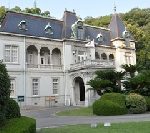
This is a French Renaissance-style villa, built in 1922 by Hisamatsu Sadakoto (1867 – 1943), a Japanese count and a descendant of the lord of the Matsuyama Domain. Seshomiya – the Regent of Imperial Court, and, later, Emperor Showa (1901 – 1989) —stayed here, and after that, the Imperial family often used the villa. It is said that at that time, celebrities from all over the world gathered for socializing.
In 2011, the main building and the management building were designated as National important cultural properties.
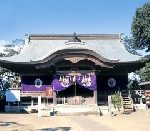
Silk spiders’ Sumo wrestling is a traditional event for children during summer vacation. Himososhi, a horizontal stick in a Sumo wrestling ring, under which there is a water container on the Kagura stage of sacred music and dance. The fallen spider hates the water and climbs to the ring again to fight.
A former senior regent, Ichijyo Norifusa (1423 – 1480) moved to Nakamura Tosa Province in the Muromachi Period (1366 – 1573), which was his Shoen, a manor territory, to avoid the Onin War (1467 – 1477).
The Onin War was the controversy over the successor of the Ashikaga Shogun between Hosakawa Katsumoto (1430 – 1473) who was Ashikaga Shogun’s deputy, and Yamana Sozen (1404 – 1453) who was Shugo, Governor of Provinces in the west part of Japan.
Ichijyo-accompanied women in the court, introduced the Silk spiders’ Sumo wrestling, the play of the Imperial Palace, to the local people. The local people liked Ichijyo Norifusa and they built the shrine to honor him.
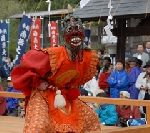
Rengekai, has been passed down from the Heian period (794 – 1185) to this temple, and was descended from the court music and dance in Kyoto. It retains the characters of ancient religious ceremonies and its faces and costumes are exotic, and its origins are considered dances from various places, such as India, China, the Korean Peninsula, and Asia.
The old mask used for the dance, introduced from Continental China in the Nara period (710 – 794). was burnt down in a fire in 2007. It seemed to have descended from the Mask of Gigaku, a masked drama-dance performance imported to Japan in the Asuka period (550 -710) and disappeared after the Tempyo era (729 – 749) in the Nara period (710 – 794).
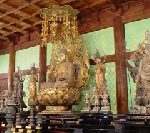
The excavation of the pommel of sword with Head Ornaments, provides Yamaguchi with a strong connection to the Yamato Court in 6th century Yamato. Through Suo Kokufu, a provincial office and Suo Kokubunji Temple, a state-supported provincial temple in the 8th century, there is a complex of buildings from the time of its establishment in the Nara period (710 – 794). It is very rare in Japan.
The principal image of this temple is the statue of Yakushi Nyorai, the Buddha of Healing. The Flanking Attendants of the Yakushi are the statue of Gakko Bosatsu, the deity of the Moon, and the statue of Nikko Bosatsu, the deity of the Sun. The statues of the Flanking Attendants were originally symmetric, but these statues are made in the same shape, which is unusual. Those statues are presumed to be an early work in the Heian period (794 – 1185), by the gentle appearances, and the stretched bodies with a high waist.
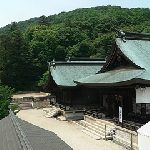
This shrine was located at the northeast foot of Mt. Kibi no nakayama which was worshiped by the Okayama domain during the the Edo period (1603 – 1868). It became the Bizen Ichinomiya: Bizen, Okayama’s most important provincial shrine, after the Taika Reforms in 645: political innovations led by Prince Nakanoue (Emperor Tenji) (626 – 672), and Furiwara Kamatari (614 – 669), against the powerful Soga clan to extend the direct dominion of the Emperor’s family over the whole of Japan.
Kibitsuhiko no mikoto, legendary Japanese and the son of Emperor Korei, was a general dispatched by Emperor Sojin, and was a model of Momotaro: a popular hero of Japanese folklore. According to the legend, Momotaro was born from a Giant peach. He and his animal friend penetrated Onigashima (the Ogres’ fort), beat the Ogres into surrendering, and returned with the Ogres’ plundered treasure.
The descendants of Kibitsuhiko no mikoto, were generationally Kuni no Miyatsuko, a regional administrator of Kibi Province, connected to the Kibi clan that supported the Yamato Imperial Court. Inukai Takeru no mikoto was a retainer of Kibitsuhiko no mikoto, and became the founder of the Inukai clan.
Inukai Tsuyoshi (1885 – 1932), was a Japanese Prime Minster and the descendent of Inukai Takeru no Mikoto.

This temple was a Chokuganji Temple, the temple built at the order of the Emperor in the Kamakura period (1185 – 1333). This temple is a complex of buildings with seven major structures in the traditional Zen-style architecture. It has Sanmon (temple gate), Butsu-den (Buddha hall), Hojo, (abbot’s chamber), Kuri (temple kitchen, quarters of a head priest and his family), Zen-do (a meditation hall), Shoro (a bell tower) and Kyo-zo (scripture house).
It is said that Master Painter, Sesshu Toyo (1420 – 1506), a Zen monk and the master of ink painting in Japan, practiced at this temple in his child days. There, he painted a mouse with his tears. Its precincts is splendid, where the elegance from silence and clarification hangs.
The three-storied pagoda was built during the period of the Northern and Southern Courts (1336 – 1392). Dainichi Nyorai, Supreme Buddha of the Cosmos and the central object in Esoteric sects of Buddhism, and the flanking image of the Four Devas, were worshiped to install Shumidan, an altar of a Buddhist image, on the pagoda’s first story. Its ceiling has the painting of Tenyo, a heavenly maiden. Its Sorin was made of bronze.
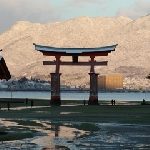
This big Torii is a beauty system that shows harmony with nature, and the wisdom of 800 years ago. The present Torii is the 8th generation, which stands with its own weight without being buried deeply into the sand of the Sea.
The upper box-shaped Shimagi, beam under the roof is packed with 4 tons of fist-sized cobble stones. 6 pillars, including the main pillars, and Sodebashira, small pillars supporting the main pillars of the Torii, and the roof are connected by wedges, which absorb movement and distortion.
In the bottom of the sea, piles of pine wood were driven, to reinforce the ground, and Fuseki, continuous stones, were placed to make a foundation.
*The big Torii is currently under restoration work.
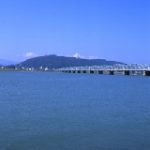
When Funanoo, the son of Prince Toneri and a poet, visited the Naniwa no Miya, Naniwa Palace in the accompaniment of Emperor Shoumu (701 – 756), in 734, he looked over the mountain in Awa Province over the sea, and wrote a poem. The poem began with “Haru Sangatsu, Mayunogoto Kumoini Miyuru Awan no Yama: Looking over the mountains of Awa, which looks like a long horizontal eyebrow over the clouds in spring, – “. The father of the prince was Prince Toneri (676 – 735), a son of Emperor Temu (631 – 686).
The prince deeply believed in Buddhism and he served the general master of Gigaku performing in the ceremony to consecrate the Great Buddha, Vairocana. Gigaku, is the masked drama-dance performance, imported to Japan in the Asuka period (550 -710). The mountain in Awa Province at the poem is Mt. Bizan, Tokushima City.
It takes 6 minutes to the summit by a ropeway and the view from the summit overlooks the Kii Channel and Naniwa Osaka. Funanoo’s poem ended with “Kogu Funeno Tomarimo Shirazu: I can see a boat rowing there.” The prince was exiled to Oki Island, for suspicion of rebellion, in 762.
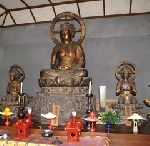
The statues at this temple of the Buddha triad, Buddha attended by two Bosatsus, were made in the Heian period (794 – 1185). The main seated statue is the image of Amida Nyorai, Amitabha, the principal image of Buddha in Pure Land. It sits in Ketsukafuza, Lotus position, with legs crossed for meditation practice.
It is 139.1 cm tall and its face appears refined and splendid, well-balanced, with the soft, drape-like sculpting style. All three statues are made in Yosegi Zukuri, the technique of assembling wood blocks, after being treated and craved, and made of cypress wood. These were made in the Fujiwara era of Kokufu Bunka, Japan’s original national culture (894 – 1185).
Those statues were originally Amida Goson-zo, 5 statues: the statue of Amida Nyorai with 4 attended statues. This Buddha triad, which used to have the two statues of Jizo Bossatsu, a guardian deity of travelers and children, and Ryuju Bossatsu, the priest and scholar existed around 150-250 years from South India, who established early Mahayana Buddhism. Those are currently in the possession of Nara National Museum. It is the only surviving statues of Amida Goson-zo from the Heian period.
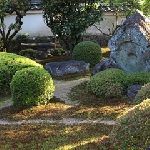
This temple is near the site of the residence of Ki no Tsurayuki (872? – 945): Japanese author, poet and courtier of the Heian period, who served as the 48th Kokushi, provincial governor, of Tosa Kochi. There is a garden of Sugigoke: hair moss, with the slab engraved with Haiku: Japanese poem of seventeen syllables, of Takahama Kyoshi (1874 – 1959): a Japanese haiku poet.
The garden welcomes Ohenrosan – Shikoku Pilgrimage: a multi-site pilgrimage of 88 temples associated with Kobo Daishi Kukai (774 – 835), the founder of the Shingon sect, with calmness all year round.
It is no coincidence that it was chosen as the Province’s best place by the imperial decree of 739 as the place to build Kokubunji, state-supported provincial temple in the 8th century.
Even though it became an abandoned mossy temple in the Medieval Ages, Chosokabe Motochika (1539 – 1599): a feudal lord, and the 21st head of the Chosokabe clan in Tosa Province, rebuilt it in 1558, and its history continued.
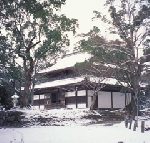
This temple was built by Emperor Tenji (626 – 671) for his mother, who died at the Battle of Hakusukinoe, during the Paekche restoration war, in 663. This temple has a bell which is said to be the oldest bell casted in Tatara Chikuzen Province, Fukuoka in 681. This temple was the best temple in the western part of Japan, where Kaidanin, the original ordination hall for priests in Japan was established in 754, by Ganjin (688 – 763), a Chinese monk who helped to propagate Buddhism in Japan, during the Tempyo era (729 – 749) of the Nara period (710 – 794).
Sugawara no Michizane (845 – 903), a scholar, poet, Udaijin, the Junior Minister of Stage, and revered as the god of learning, wrote a poem, Fushutumon. The poem mentioned the will to behave himself, which was sworn on this temple bell. Hozo, the treasure house of this temple, exhibits 16 precious Buddha statues from the Heian period (794 – 1185) and Kamakura period (1185 – 1333).
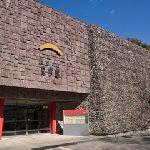
Tosa Province Kochi has been surrounded by the majestic Pacific Ocean in the south and the steep Shikoku Mountains in the north. This Literary Museum introduces literary people of Kochi Prefecture, theme by theme, who have grown up in this unique climate.
This museum exhibits Tsukijigaku, a part of the Hengaku of Matsuyamaji Temple at Ida Kuroshio Town. Tsukijigaku was attributed to Ki no Tsurayuki (872? – 945), a Japanese author, poet and courtier of the Heian period. It also exhibits strips of fancy paper by Imamura Tanushi (1765 – 1810), a Japanese classical scholar in the Edo period (1603 – 1868), who adored Kamo no Mabuchi (1697 – 1769), a Japanese poet and philologist.
Tanushi studied Japanese classical literature, and researched and guided Manyoshu, the 8th century anthology of Japanese poetry.
– Tsurayuki was the provincial governor of Tosa Province and said that the Japanese poet had the power to move the sky and the earth without force. The Japanese people believed the nature and the soul could synchronize.

Yame has been an alluvial fan, supplying the blessing of nature, since ancient times, where the Yabe River and the Hoshino River flowing from the Oita Prefectural border, meet. At the present, Yame is one of Kyushu’s leading tea producing areas, and its Gyokuro, refined green tea production is second only to Kyoto.
This Tea Field is 70ha in size which is like a green carpet as far as you can see. It is easy to spend time here in summer and winter, and there is no record of large natural disasters. This alluvial fan scented like Gyokuro was the land of the king in ancient northern Kyushu Islan

The Dazaifu Government office was called To no Mikado, the government office located far from the capital, in the Manyoshu, the 8th century anthology of Japanese poetry. The Dazaifu Government office governed the entire Kyushu Island. They took care of the national defense and foreign affairs on the Peninsula and on the Continent in the latter part of the 7th century. The site of the office covered 215.45m North-South and 119.2m East-West. The scale was next to capital central office. The government office ruins around the area have been restored. A historical park has also been built, which serves as a relaxing place for many people.
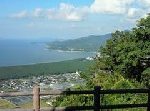
The summit of Mt. Kagamiyama (Height 284m) has a good view to look over Nijinomatsubara, a 360-year-old pine forest in Karatsu Saga, with a width of 400 – 700m and a length of about 4km. It was the property of the 1st lord of Karatsu Domain, Terasawa Hirotaka (1563 – 1633), who created Karatsu Bay, and as far as Ikinoshima Island.
This mountain is a famous spot for cherry and azaleas blossoms, and, in early April, a flower tunnel comes up along both sides of the 4km mountain trail. There is a stone statue of a princess, who saw off and continued shaking off her stall to Otomono Sadehiko, the general in the Japanese Imperial court, and the son of Otomono Kanamura, high ranking ministry in the court in the 5th – 6th century.
Sadehiko was dispatched to the Korean Peninsula, in the time of the Invasion of Mimana, by Siila (BC57 – 935), which was in the southern area of the Korean Peninsula, and the site of Nihon-fu, the governing institution of Japan, in ancient times.

It is said that Kikuchijyo Castle was built in the hilly area of the Kikuchi River basin by the guidance of aristocrats exiled from Paekche. Japan was defeated by Siila and Tang allied forces at the Battle of Hakusukinoe, the Paekche restoration war, in 663 on the Korean Peninsula in the latter half of the 7th century. Military bases were established in various places in West Japan, in preparation for the invasion of the Japanese archipelago.
The Kikuchi River basin is a rich area that benefits from Mt. Asosan. It is an important area of the Yamato Imperial Court in Japan. This museum introduces the culture from Paekche and historical tension at that time through the reconstructed historical sites.
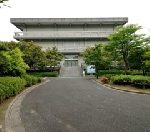
Sacred Island of Okinoshima and Associated Sites in the Munakata Region were listed on the UNESCO World Heritage in 2017.
Munakata Taisha shrine consists of the Okitsumiya shrine, the Nakatsumiya shrine and the Hetsumiya shrine. Okinoshima Island, where Okitsu-miya is enshrined, is located in the middle of the Genkai-nada Sea, which connects Kyushu Island and the Korean peninsula.
An amazing 80,000 sacred treasures were excavated from Okinoshima Island and have been designated as national treasures. That is why it is known as “Shosoin (Imperial Treasure House) in the Sea”. Those treasures are exhibited and stored in the “Shinpokan” of Hetsumiya shrine, inland at Tajima, Munaka.

Usa Jingu is the Grand Head Shrine of Hachimanjinja shrines, more than 40,000 shrines throughout Japan. The main shrine, with sacred silk and other sacred materials from the Emperor, was dedicated as Heihaku, by Usanotsukai, the envoy from the Imperial Court. It was built in the Yawata Zukuri style, which connects the front and back of two buildings.
The Hachiman deity was the first God to have Shinbutsu-shugo, the syncretism of Shintoism and Buddhism. On the site of this shrine, Jinguji (a temple attached to a shrine) and Mirokuji temple were built. It became the mecca for Shinbutsu-shugo. Since the Mirokuji temple was abandoned during the Meiji period (19th century), the National Treasure, Kujakumonkei, a Buddhist ritual gong with Peacock Relief and inscribed “1209,” tells the history of Shinbutsu-shugo.
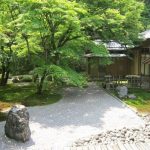
This is the same temple as the Tofukuji temple School in Kyoto and is connected with Tenmangu Shrine, which was founded by Tetsugyu Enshin (1254 – 1326), a monk of Rinzai Zen.
Enshin came from Kanke, the Kan family, which had produced scholars from generation to generation. They were to be a Monjo Hakase, Doctorate of Literature at Daigakuryo, the Imperial university. He studied Ritsuryo, the Japanese ancient law system, including Sugawara no Michizane (845 – 903), a scholar, poet, Udaijin, the Junior Master of Stage, and revered as the god of learning.
This temple has the front garden, Futsuko Sekitei of Karesansui, a dry landscape garden that represents the ocean with white sand. The Japanese character meaning “light” is made by arranged stones, letting visitors feel the light in their heart. It has also the back garden, Itsutekikai no niwa, which represents land with moss and the ocean with white sand. And only maple trees are planted at both gardens, whose leaves fall off the trees during winter.
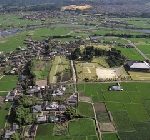
As epidemic and famines spread throughout the country, Emperor Shoumu (701 – 756) issued an imperial decree to build Kokubunji, a state-supported provincial temple in each Province in Japan. The location selected for Kokubunji was surrounded by paddy fields and overlooked a magnificent sacred mountain in Bungo Province, Oita.
Bungo Kokubunji has a seven-storied pagoda of about 67 m height and a two-storied Kondo, the main hall of a Buddhist temple that enshrines the principal image. The two buildings were lined up on the precinct, which spanned 300 m from north to south and about 180 m from east to west. The cornerstone of the seven-storied pagoda still remains.
This museum, located on the site of the historic park, introduces excavated Haji pottery and materials.
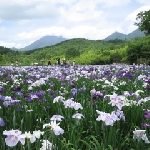
Mt. Tsurumidake can be seen from the front of Beppu Bay. It had a large volcanic eruption in 867, during the Nara period (710 – 794). At that time, a festival was held, to calm the God of Fire in the mountain, and a shrine was established.
Kagurameko Lake was the place where Kagurame, a shrine maiden lived during the Heian period (794 – 1185) and performed Kagura, sacred music and dancing, which calmed down the god of Tsurumidakesha Shrine.
Today, the Water lilies garden overlooking Mt. Yufudake and Mt. Tsurumidake has 300,000 Water lilies, with about 15,000 plants of about 80 species. Those lilies make a harmony with the God of Fire, taking Kagurame’s place.



